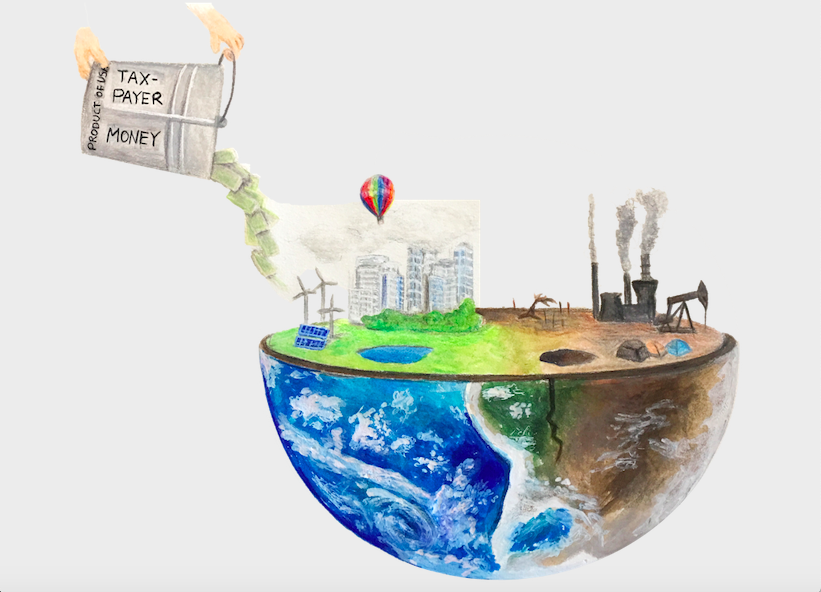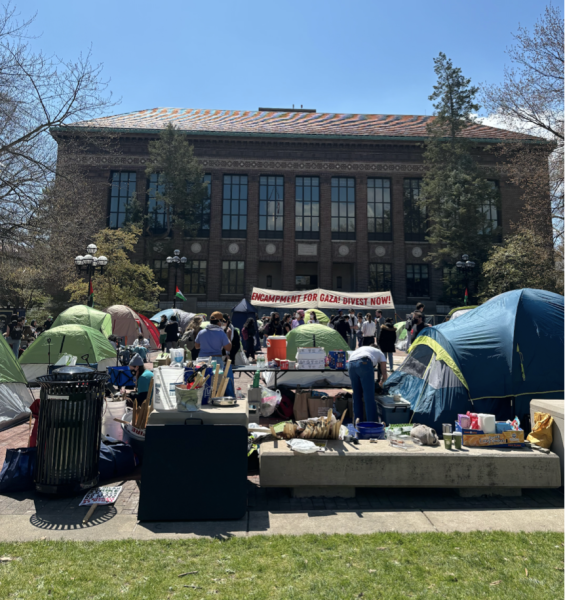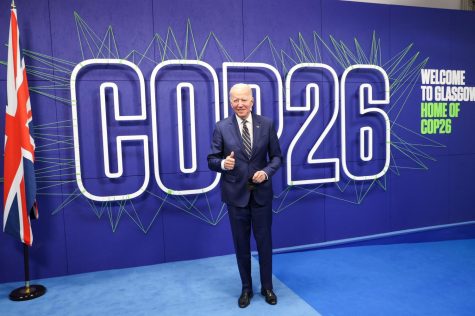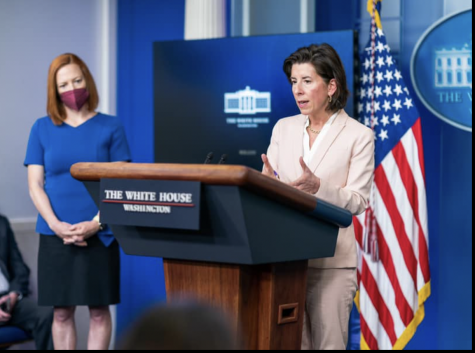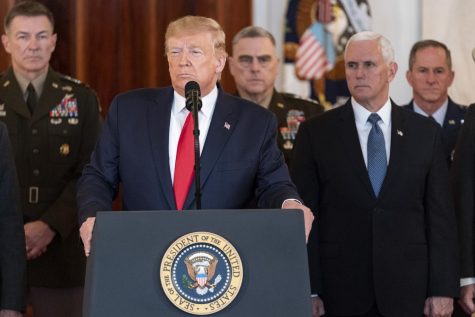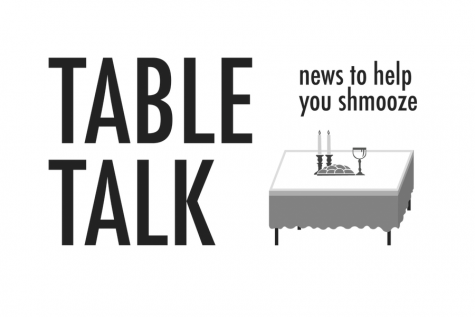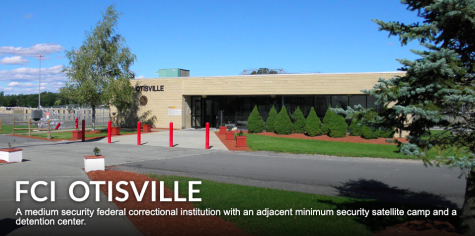The Green New Deal: Big cost, big ambitions
A resolution that seeks the physical result of protecting the environment combined with the more abstract result of an improved economy has been drafted into the Green New Deal by Rep. Alexandria Ocasio-Cortez (D-N.Y.)
Unlike a law, bill or funding package, a resolution expresses the sentiments of a single house of Congress, and is not legally binding. This one was introduced on Feb. 7, sponsored by Rep. Ocasio-Cortez and Sen. Ed Markey (D-Mass.).
It failed in the Senate after all 53 Republicans and four Democrats voted against it on March 26, and has not been introduced to the floor of the House by Democrats. House Majority Leader Nancy Pelosi has said she would rather vote on environmental legislation than non-binding environmental resolutions.
But it has attracted both interest and controversy: interest because it claims to be able to solve problems that are urgent and seem unsolvable, and controversy because of accusations that it is unrealistic, gives the government too much power in economic matters, and is very expensive. Some sources speculate it would cost up to $93 trillion. < good?
The Green New Deal calls for the government to respond to climate change on a similar scale to President Franklin Delano Roosevelt’s response to the collapsed economy during the Great Depression. With unemployment at 25 percent, the New Deal created government programs including Social Security, Medicare, and the U.S. Securities and Exchange Commission,while employing millions building huge infrastructure projects like Hoover and Grand Coulee dams, LaGuardia Airport and national parks. Much of it was financed with debt.
Rep. Ocasio-Cortez explained the connection in an interview with MSNBC March 29.
“We could solve all of the environmental issues in the world if those climate policies and solutions are grafted onto the existing framework of economic injustice,” said Rep. Ocasio-Cortez in an interview with MSNBC on March 29.
The resolution begins by stating that climate change is closely linked with economic issues, thus the two issues can be solved together.
“Global warming at or above 2 degrees Celsius beyond pre-industrialized levels will cause more than $500 trillion in lost annual economic output in the United States by the year 2100,” the document states.
Saving the environment, it says, provides the opportunity to solve social problems such as racism and income inequality, because well-paying jobs created to combat global warming will raise living standards.
Like the New Deal of 1933, it envisions an economy in which the government plays a strong role. The resolution lists five general goals: net-zero carbon dioxide emissions, which are believed to be raising world temperatures; the creation of high-wage jobs; improvement of infrastructure and industry; a clean and sustainable environment; and justice and equity.
It goes on to list measures needed in order for these goals to be met.
They include elimination of greenhouse gasses, upgrading all existing buildings for maximum energy efficiency, guaranteeing a job with paid vacation to all people of the United States, and ensuring or providing healthcare, higher education and housing to all.
Critics have deemed the deal unreasonable due to its 10-year goal, the combining of issues, and the price tag. Most of its estimated cost is for the social, not the environmental, improvements.
Douglas Holtz-Eakin, economist and former director of the nonpartisan Congressional Budget Office, estimated that implementing all of the Green New Deal’s programs would cost between $51 trillion and $93 trillion, most of it for jobs and health care.
Writing on the website of the American Action Forum, of which he is president, Mr. Holtz-Eakin put the price for transitioning to a low-carbon electricity grid at $5.4 trillion, $2.7 trillion for a net-zero emissions transportation system and $4.2 trillion for “guaranteed green housing.”
The costs for universal healthcare and job programs were estimates: for example, “$6.8 to $44 trillion for guaranteed jobs.”
“Even if the estimates are five to 10 times too high (and I suspect they are more likely too low), it is hard to wrap one’s head around numbers these large,” wrote Mr. Holtz-Eakin, a former adviser to Sen. John McCain who is president of the American Action Forum, on the AAF website. “But if you manage to do so, be aware that the likely social upheaval would be even larger.”
Roberta Giordana, a volunteer organizer with Sunrise Bay Area Hub, an environmental activist group for young people, said that the cost shouldn’t be an issue when considering the resolution.
“You will hear that it’s not feasible, that it’s expensive, you will hear that from lRepublicans, and really conservative folks that ultimately want to maintain the status quo,” said Ms. Giordano in an interview with the Boiling Point.
“It’s really not a matter of ‘this is too expensive, we can’t do it,’ it’s a matter of are you willing to do it,” she said.
Opponents say that the price point makes the deal unfeasible.
“Ninety-three-trillion dollars is more money than the United States government has spent in its entire history,” said Senator John Thune (R-S.D.) in a speech to the Senate on March 26. “It’s taken us 230 years of history to spend the amount of money the Democrats want to spend in 10 years.
“The Democrats’ Green New Deal will put the government in charge of a large portion of the economy, and significantly shrink America’s freedom.”
Senate Majority Leader Mitch McConnell said that the deal will result in a loss of jobs.
He said in a Tweet that it would mean “killing off entire domestic industries, winding down millions of jobs, basically outlawing the only sources of energy that working-class and middle-class families can actually afford.”
But Rep. Ocasio-Cortez believes that the solutions to climate change as well as economic and social injustice go hand in hand.
“These are not different problems, these are part of the same problem,” Rep. Ocasio-Cortez said on MSNBC. “It doesn’t have to be that way. Especially when our greatest existential threat is climate change.
“And so to get us out of this situation, to revamp our economy, to create dignified jobs for working americans, to guarantee healthcare and education, we will have to mobilize our entire economy around saving ourselves and taking care of this planet.”
The Green New Deal is supported by some Democratic 2020 presidential candidates, including Senators Kamala Harris, Cory Booker, Elizabeth Warren, and Bernie Sanders, Mayor Pete Buttigieg, and Andrew Yang.
Opponents of the deal include President Donald Trump, Senator Mike Lee, and Senator Lamar Alexander.

Kate Orlanski joined the Boiling Point as a staff writer during her freshman year and now serves as Features editor during her junior year. Outside of journalism, she is co-chair of the Young Americans for Freedom club, a member of the Model Congress team and secretary of the Agenda Committee.

